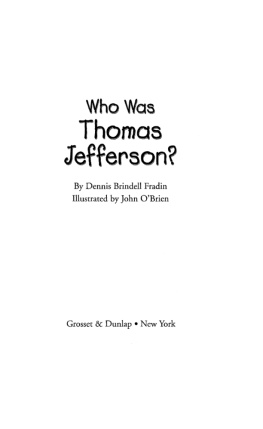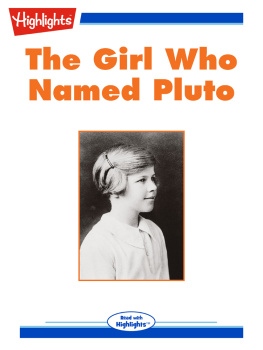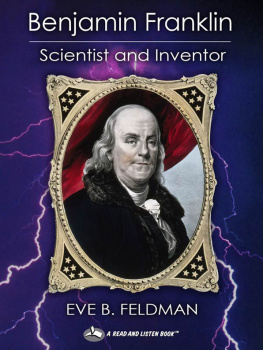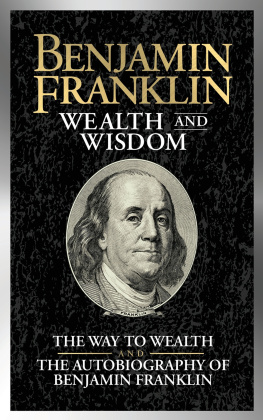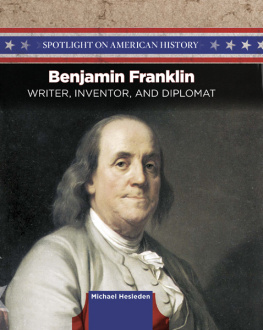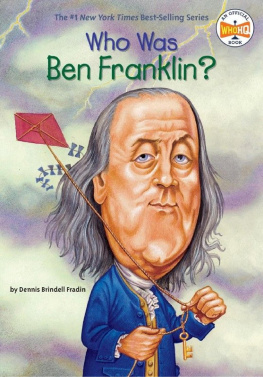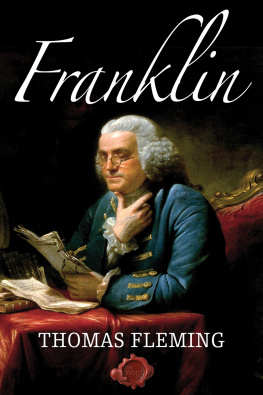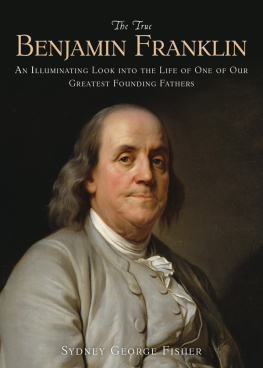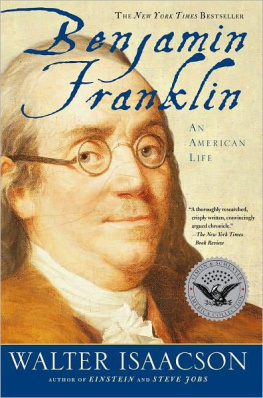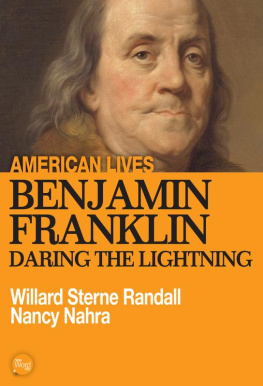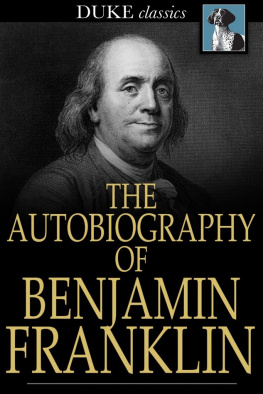Who Was
Ben Franklin?
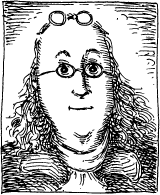
By Dennis Brindell Fradin
Illustrated by John OBrien
Grosset & Dunlap New York
For two of my biggest fansmy father,
Myron Fradin, and my father-in-law,
Harold BloomD.B.F.
For TessJ.OB.
Text copyright 2002 by Dennis Brindell Fradin. Illustrations copyright 2002 by John OBrien. Cover illustration 2002 by Nancy Harrison. All rights reserved. Published by Grosset & Dunlap, a division of Penguin Young Readers Group, New York. GROSSET & DUNLAP is a trademark of Penguin Group (USA) Inc. Published simultaneously in Canada. Printed in the U.S.A.
Library of Congress Cataloging-in-Publication Data
Fradin, Dennis B.
Who was Benjamin Franklin? / by Dennis Brindell Fradin; illustrated by John O Brien.
p. cm. (Who was?)
Summary: A biography of the eighteenth-century printer, publisher, inventor, scientist, and statesman who played an influential role in the early history of the United States.
1. Franklin, Benjamin, 1706-1790Juvenile literature. 2. StatesmenUnited StatesBiographyJuvenile literature. 3. ScientistsUnited StatesBiographyJuvenile literature. 4. InventorsUnited StatesBiographyJuvenile literature. 5. PrintersUnited StatesBiographyJuvenile literature. [1. Franklin, Benjamin, 1706-1790. 2. Statesmen. 3. Scientists. 4. Inventors. 5. Printers.] I. OBrien, John, ill. II. Title.
III. Series.
E302.6.F8 F725 2002
(OcoLC)ocm49211684
2002280612
ISBN: 978-1-101-64008-1 40 39 38 37 36 35 34 33 32 31
Who Was
Ben Franklin?
Benjamin Franklin was a man of many talents.

He was a statesman. Perhaps only George Washington did more than Ben Franklin did to free the United States from England.
He was a scientist. For one thing, Ben discovered the nature of lightning.
He was an inventor. Thanks to him, we have lightning rods and bifocal glasses.

He was an author. He wrote a famous book about his experiences. And people still use the phrase Haste makes waste, and other sayings that Ben made popular.
Ben did much more in his long life. He began Americas first general hospital. He started one of Americas first libraries. He helped create the United States Postal Service.

Ben did so much that some people claimed he had magical powers. But he was a flesh-and-blood person. In fact, his life was often sad. As a youth he ran away from home because he was beaten. Later, he lived far away from his wife. And a fight over politics came between Ben and his son.
This is the true story of Ben Franklinstatesman, scientist, inventor, author, and human being.
Chapter 1
Catching Lightning a Bottle
On a June day in 1752, a storm approached Philadelphia. The sky grew dark. As thunder rattled the windows, people ran inside. But in a house at the corner of Race and Second streets, two people were getting ready to go outside. One was forty-six-year-old Benjamin Franklin. The other was Bens twenty-one-year-old son William.

SILK KITE

Billy picked up a strange-looking kite. His father had made it for just such a stormy day as this. A metal wire stuck out of the top of the kite. A metal house key was tied to the end of the kite string. Ben grabbed a jar and put it under his coat. The pair dashed through the rain with the kite and the bottle. They stopped when they came to a field.
Billy ran across the field three times trying to fly the kite. Finally, the wind did its work.
Up soared the kite, higher and higher. Soon it was just a speck in the clouds. Ben took the kite string from his son. Then they went into a nearby shed and waited.

As Ben held the kite string, they both felt excitedand scared. With his sons help, Ben was trying to answer an old question. Were lightning and electricity the same thing?
Ben suspected that they were. He hoped that flying the kite in the storm would prove it.
Ben believed that electricity in thunderclouds could cause lightning.

The wire on their kite would draw electricity from a cloud, Benjamin hoped. The electricity would run down the kite string to the key. There it would make a spark that he would feel. But the experiment was dangerous. What if a giant lightning bolt struck the kite? The current might kill Benand perhaps Billy as well.
As the lightning flashed nearer, Benjamin touched the key. He felt no electric spark. He tried again. Still he felt nothing. Finally, the storm seemed to be overhead. Ben and Billy held their breath as a black cloud swallowed the kite. Benjamin pressed the key. Nothing. Then suddenly he felt a tingle. He had felt shocks like this before in his lab. A spark from the cloud had electrified the kite. The spark had zoomed down the wet string into the metal key, where Ben could feel it. With Billys help, he had proved that lightning was electricity!

But the father and son werent done. Ben took the bottle from beneath his coat.
LEYDEN JAR

It was called a Leyden jar, and it stored electricity. The glass jar had a metal rod sticking out of it. Ben touched the rod of the Leyden jar with the key. The electricity flowed from the key into the bottle. When he finished putting the electricity into the jar, he reeled in the kite. Then Ben and his son went home with the kite and the bottle of electricity.
News of the experiment spread. Ben Franklin became famous for proving that lightning was electricity. But he wasnt satisfied. Now he wanted to make lightning less dangerous. Within a short time, he invented the lightning rod. A metal rod was fixed to the top of a building. When any lightning hit the rod, it would run into the ground through a wire. The buildingand the people insidewould not be harmed.

Ben placed a lightning rod on his house. By the end of 1752, other Philadelphia buildingsincluding the state capitolalso had them. Lightning rods were later put up around the world.

Next page

